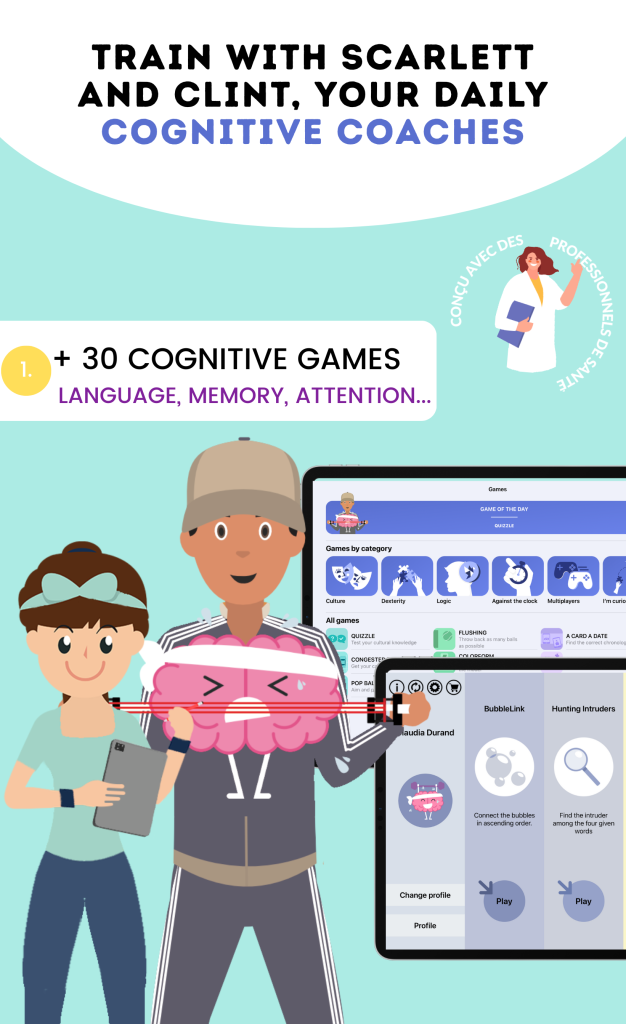Caregivers play an essential role in our society by providing assistance and support to elderly people, sick individuals, or those with disabilities. Their work involves helping these individuals in their daily lives by offering help with household tasks, personal care, medication management, and much more. However, this work can be very demanding and requires effective organization and communication. This is where our toolbox comes into play.
The purpose of this article is to present how our toolbox can enhance the work of caregivers by offering features that facilitate time management, communication with patients, organization of medications and household tasks, as well as understanding the needs of patients.
How Our Toolbox Improves the Work of Caregivers
Our toolbox is software specifically designed for caregivers. It offers a range of features that allow caregivers to organize their work more effectively and improve their communication with their patients.
Among the features of the toolbox is an integrated calendar that allows caregivers to schedule their visits to patients and manage their timetable. They can also use this feature to keep track of medical appointments and other important commitments.
The toolbox also includes a messaging system that allows caregivers to easily communicate with their patients. They can send messages to confirm appointments, ask for additional information, or simply check in on how their patient’s day is going.
Case Study #1: How Our Toolbox Helped a Caregiver Better Manage Time
In this first case study, we will examine how our toolbox helped a caregiver better manage their time. Before using the toolbox, the caregiver struggled to organize their visits to patients and adhere to scheduled times. This led to delays and frustrations for the patients.
Once they started using the toolbox, the caregiver was able to plan their visits more effectively thanks to the integrated calendar. They could clearly see their tasks for each day and organize their schedule accordingly. This allowed them to be more punctual and avoid delays.
The results obtained were very positive. Patients were satisfied with the service provided by the caregiver and felt reassured knowing that they would be there at the agreed time. Additionally, the caregiver felt less stressed and more confident in their work.
Case Study #2: How Our Toolbox Enabled a Caregiver to Better Communicate with Their Patient
In this second case study, we will examine how our toolbox enabled a caregiver to better communicate with their patient. Before using the toolbox, the caregiver had difficulty conveying important information to their patient and receiving responses to their questions.
Once they started using the toolbox, the caregiver was able to send messages to their patient to remind them of appointments, ask if they needed anything, or simply say hello. The patient could respond directly to the messages, which facilitated communication between them.
The results obtained were very positive. The patient felt more connected with their caregiver and appreciated being able to communicate easily with them. Furthermore, the caregiver felt closer to their patient and could better respond to their needs.
Case Study #3: How Our Toolbox Helped a Caregiver Better Organize Their Patient’s Medications
In this third case study, we will examine how our toolbox helped a caregiver better organize their patient’s medications. Before using the toolbox, the caregiver struggled to keep track of medical prescriptions and ensure that the patient took their medications correctly.
Once they started using the toolbox, the caregiver was able to create a medication plan for their patient. They could record prescribed medications, dosages, and schedules for taking them. The toolbox would send reminders to alert them when to give the medications to the patient.
The results obtained were very positive. The patient took their medications correctly, and the caregiver felt more confident in their ability to manage this important task.
Case Study #4: How Our Toolbox Enabled a Caregiver to Better Manage Household Tasks

In this fourth case study, we will examine how our toolbox enabled a caregiver to better manage household tasks. Before using the toolbox, the caregiver struggled to organize household tasks and ensure that all were completed.
Once they started using the toolbox, the caregiver was able to create a list of household tasks for each visit to the patient. They could check off completed tasks and ensure that nothing was missed. Additionally, they could add notes to indicate if certain tasks required special attention.
The results obtained were very positive. Patients were satisfied with the work done by the caregiver and felt reassured knowing that all household tasks were taken care of.
Case Study #5: How Our Toolbox Helped a Caregiver Better Understand Their Patient’s Needs
In this fifth case study, we will examine how our toolbox helped a caregiver better understand their patient’s needs. Before using the toolbox, the caregiver had difficulty understanding the preferences and specific needs of their patient.
Once they started using the toolbox, the caregiver was able to record the preferences and specific needs of their patient. They could consult this information before each visit and ensure they provided personalized service.
The results obtained were very positive. The patient felt understood and cared for by the caregiver, which improved their overall satisfaction.
The Benefits of Our Toolbox for Caregivers
In summary, our toolbox offers numerous benefits to caregivers. It allows them to organize their work more effectively, improve their communication with their patients, organize medications and household tasks, as well as better understand the needs of patients.
Caregivers who have used our toolbox have expressed their satisfaction with its usefulness and effectiveness. They have noticed a significant improvement in their daily work and have been able to provide better service to their patients.
How Our Toolbox Can Help Caregivers Improve Their Daily Work
To make the most of our toolbox, we recommend that caregivers follow a few practical tips. First, it is important to take the time to fully understand all the features of the toolbox and use them regularly. This will allow caregivers to fully exploit the potential of the tool.
Additionally, we offer training for caregivers to help them master our toolbox. These trainings are conducted by experienced professionals and allow caregivers to acquire the necessary skills to use the tool effectively.
Conclusion: The Successes of Caregivers Thanks to Our Toolbox
In conclusion, our toolbox offers many features that can help caregivers improve their daily work. The case studies presented in this article have demonstrated how our toolbox has helped caregivers better manage their time, communicate more effectively with their patients, organize medications and household tasks, as well as better understand the needs of patients.
Caregivers who have used our toolbox have noticed a significant improvement in their work and have been able to provide better service to their patients. We are proud to contribute to their success and will continue to develop our toolbox to meet the changing needs of caregivers.
In the future, we hope that our toolbox will continue to help caregivers provide essential support to those in need. We are confident that our tool can make a real difference in the lives of caregivers and their patients.





